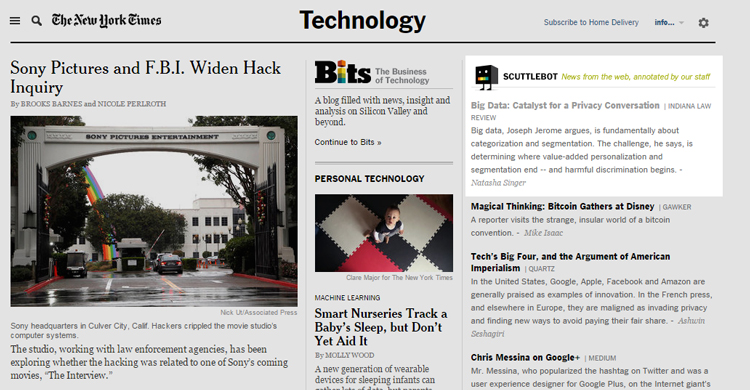Overcoming the Privacy Management Buzzkill: Make Privacy Fun?
Over the past two years, protecting our personal privacy has come to feel like a daily struggle and an oppressive burden. With the holiday shopping season in full swing, get ready for more stories about major data security breaches at retailers, our devices being detected through every shopping aisle and checkout line, and the usual array of Grinch-like hackers and spammers looking to steal our most intimate photos.
Bah! Humbug!
So it should come as no surprise that average Americans feel completely insecure when it comes to protecting their privacy. A recent Pew survey revealed 91% of Americans now believe they have lost control over how companies gather and use their personal information.
This anxiety should provide an opportunity for companies to win with consumers simply by providing them with more control. Fully 61% of those surveyed by Pew expressed a strong desire “to do more” to protect their privacy online.
Still, “user empowerment” and “privacy management” have been at the hearts of efforts to improve privacy for years, and the 2012 White House Consumer Bill of Rights repeatedly stresses the importance of providing individual controls for the collection and use of data. Many companies already offer consumers an array of meaningful controls, but one would be hard-pressed to convince the average consumer of that. Further, the proliferation of digital opt-out mechanisms has done little to actually provide consumers with any feeling of control.
The problem is few of these tools actually help individuals engage with their information in a practical, transparent way. Instead, privacy becomes an overwhelming chore, and something that takes too much time and energy for the average person to process.
What we need are tools that make privacy fun.
Nico Sell, CEO of Wickr, an app that provides encrypted self-destructing messages, argues that privacy has developed something of a dour image problem. Instead, she suggests online privacy tools need to be marketed more like snowboarding – as something cool. While it is easy to dismiss her suggestion as the sales-pitch of a Silicon Valley entrepreneur, privacy could benefit from being less like paperwork, particularly if the goal is to alleviate consumer insecurities.
Conversations abound about how privacy should be “baked into” consumer products and services, or how to offer features to control personal data. Most public privacy debates focus on what sort of check-boxes should be clicked by default. While understandable, these debates sidestep simple usability issues. We need to do a better job of embracing creative, outside-the-box ways to get consumers thinking about how their data can used, secured, and kept private online. Advances in web design and, more recently, app development have made everything from tracking personal finances to reading the text-heavy Harvard Law Review more enjoyable. There’s no reason design and functionality can’t also be used to make privacy more engaging.
Even small tweaks go far. Facebook, for example, recently featured a blue privacy dinosaur to help its users with a “privacy check-up.” More than 86% of Facebook users seeing the tool actually completed the entire privacy check-up, and Facebook suggested that the dinosaur “helped make the experience a little more approachable and a little more engaging.” Presenting users with a privacy check-up is easier than asking them to wade through a myriad of privacy settings of their own volition. Putting these simple tools right in front of user eyeballs not only makes privacy more approachable, but more salient.
How privacy tools are marketed and presented to consumers is important. Firefox announced it would enable a “Forget” button right on the browser’s dash, allowing users to wipe clean portions of the Internet browsing history with two clicks. Hardly a new feature, but it’s not something anyone thinks to do regularly. Placing privacy tools front and center can change that equation, and the “Forget” button is a much more user-friendly concept than a privacy tutorial that asks someone to plow through menus and preference panels.
Different companies have different business models and incentives to stress privacy, but everyone should agree that longstanding, widespread public anxiety – even apathy – about privacy is something that needs to be addressed. At some point, someone will find a way to marry privacy and simplicity in a cool, fun, and more importantly, widely embraced experience. A host of start-ups are working to answer that challenge, and the rise of ephemeral messaging apps like Snapchat are, if not perfect implementations, a sure sign that consumers will flock to tools that will give them privacy piece of mind.
Big tech players may be in the best position to help privacy go mainstream, which is why it’s a positive step when a company like Apple can make privacy features a centerpiece in its rollout of iOS8. Apple has always excelled at getting people engaged with its products, and at the very least, privacy needs a marketing makeover.
After all, when it comes to privacy, getting consumers engaged is half the battle. Making fun privacy tools shouldn’t be that hard. The challenge will be to make them more widespread.


